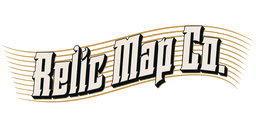1
/
of
1
Map of Louisiana, View of New Orleans. (Orléans) 1720
- Regular price
-
$114.95 - Regular price
-
$172.95 - Sale price
-
$114.95
Couldn't load pickup availability
90-Day Satisfaction Guarantee & Free Returns
About This Map
Discover the timeless beauty of our fine art quality printed reproduction of this antique map. Perfect for history enthusiasts, collectors, and interior decorators.
Restored with meticulous attention to detail by our team with over a decade of experience, this stunning reproduction captures the intricate artistry and historical significance of the original map.
Whether you're a collector or seeking a unique decor piece, this archival-quality map reproduction is a timeless addition to any space. Order now to bring history to life!
Old map of Arkansas, Illinois, Louisiana, Mississippi, Missouri, New Mexico, New Orleans, Oklahoma, Tennessee, Texas, United States of America.day Texas and into New Mexico. The map was made in Paris, based on the journal of Jean-Baptiste Bénard de la Harpe (1683--1765), "commander on the Red River." De la Harpe was a French officer, trader, and explorer who explored much of present-day Texas, Arkansas, and Oklahoma. He sailed from his native Saint Malo to New Orleans in April 1718. He was sent by the governor of Louisiana to establish a trading post on and explore the upper reaches of the Red River. He followed the river upstream, becoming the first European explorer to enter the present-day state of Oklahoma. De la Harpe encountered Indians of many tribes, including Wichita, Osage, and Apache. He returned to New Orleans in January 1720 and from there to France, where he circulated a detailed account of his travels. The map shows de La Harpe's route, rivers, Indian villages with the numbers of their inhabitants, Spanish missions, and locations where boeuf sauvages (bison) were plentiful. An inset map at the upper left shows the Mississippi River and its entrance into the gulf. Inset within the inset is an illustration of the city of New Orleans.
Created by De Beauvilliers, Baptiste in 1720.
- Title devised, in English, by Library staff.
- "Scale 1:5,800,000"--Note extracted from World Digital Library.
- Original resource extent: 1 map : manuscript, color ; 66 x 50 centimeters.
- Original resource at: National Library of France.
- Content in French.
- Description based on data extracted from World Digital Library, which may be extracted from partner institutions.
Map Tags
1720
Arkansas
Baptiste
De Beauvilliers
Exploration And Encounters
Illinois
Indians Of North America
Indigenous Peoples
Louisiana
Manuscript Maps
Map
Mississippi
Mississippi River
Mississippi River Valley
Missouri
New Mexico
New Orleans
Oklahoma
Tennessee
Texas
United States Of America
Secure Checkout
Lifetime Warranty
Money-Back Guarantee

Map Sizing Information
- For the best legibility, order your map in the original size or larger. Most maps have intricate detail and small text that is best appreciated when the print size hasn't been reduced.
- Sizes labeled "Fits a Standard Frame" will drop right into any frame that you purchase in that size. The sizes that we offer are commonly available online and at most retail stores.
- Our standard sizes are recommendations based on the aspect ratio of the original map, but still may require some added "white space" in one dimension to fit.
- Non-standard sizes will require custom framing, and we suggest taking your print to the frame shop of your choice after you receive it for the best results.
- Custom sizes are available, simply contact us for a quote.
Below is an approximation of the scale of a few standard sizes, and how they might appear in your space.





